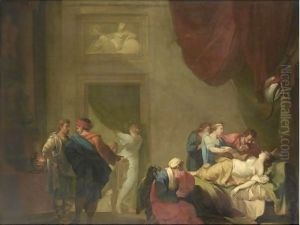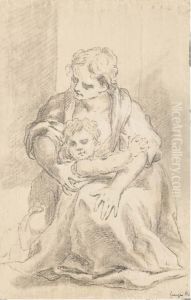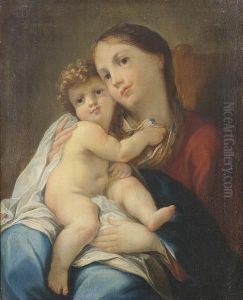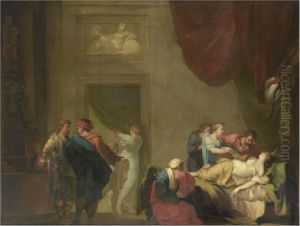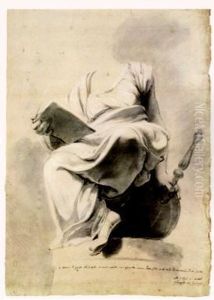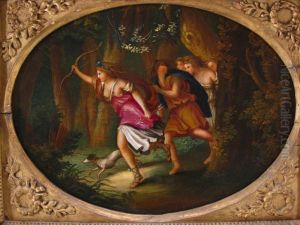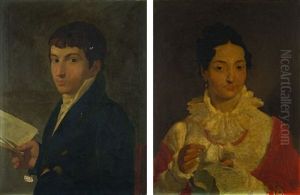Pietro Fancelli Paintings
Pietro Fancelli was an Italian artist known for his work as a painter and architect during the late 18th and early 19th centuries. Born in 1764 in Mantua, Lombardy, Fancelli came from a region with a rich artistic heritage, which deeply influenced his artistic development.
Fancelli's early training is not well documented, but it is believed that he received his initial education in the arts in his hometown before moving on to study and work in other Italian cities. He was primarily active during the Neoclassical period, which was characterized by a return to classical ideals of beauty, harmony, and proportion, heavily influenced by the ancient art of Greece and Rome. This movement was a reaction against the ornate style of the Baroque and Rococo periods that preceded it.
Throughout his career, Fancelli demonstrated his versatility by engaging in both painting and architecture. His architectural works are less known and have not been as widely studied as his paintings. However, his contributions to architecture reflect the Neoclassical style's emphasis on simplicity, elegance, and utilitarianism.
As a painter, Fancelli's works often featured historical and mythological themes, common subjects for artists of the Neoclassical era. He was known for his ability to convey the moralistic and educational values favored by Neoclassicists through his art. His paintings are characterized by their clear composition, restrained color palette, and smooth finish, which aimed to achieve the polished look of classical sculptures.
Fancelli's career spanned a significant period of political and social change in Italy, including the Napoleonic Wars and the subsequent shifts in power that occurred throughout the Italian peninsula. These events inevitably influenced the arts in Italy, as artists often relied on patronage from powerful political figures and institutions.
Pietro Fancelli passed away in 1850, leaving behind a legacy as a proponent of the Neoclassical style. Although he may not be as widely recognized as some of his contemporaries, his work remains a testament to the enduring appeal of Neoclassicism in European art. Fancelli's paintings and architectural designs contributed to the cultural landscape of Italy, and his influence can still be seen in the appreciation of Neoclassical aesthetics today.
